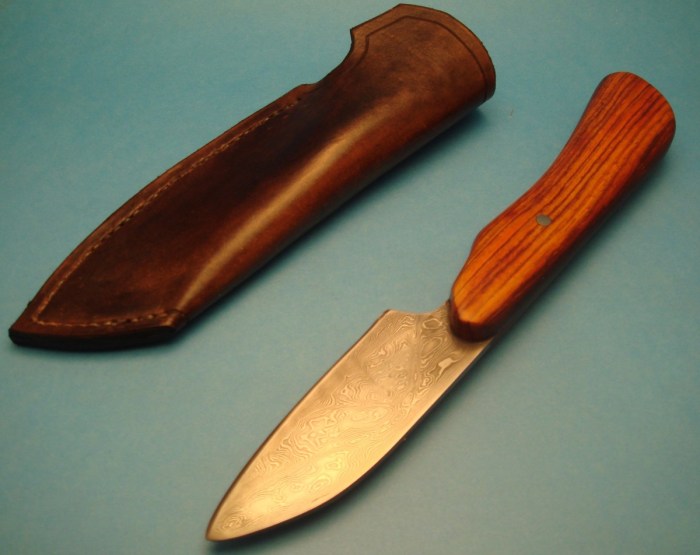
The knife above is composed of 180 layer 1095C and 15n20 steel, hidden tang with cocobolo handle and one stainless pin.
For this knife, i forged the blade to shape, but left the billet at its full quarter inch thickness. I then cut a half starburst pattern into the blade area. Basically, you can see 4 isotherm 'valleys' in the damascus that point up from the blade edge toward the spine of the blade. I used an angle grinder to cut these small 'valleys on both side of the blade, making sure the valley edges were quite rounded and 'soft', I then took the blade up to forge welding temperature and proceeded to complete the forging of the blade, bring the valley floors to the same height as the valley walls and producing the pattern you see above.
Typical ladder patterns are just verticle lines cut into the steel and then forged to the surface, and there are many variations, such as West Texas Wind, etc. that build on the ladder technique. I wanted to take this a step further and use the ladder pattern effect to produce another pattern - in this case a half starburst.